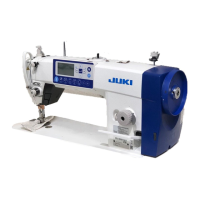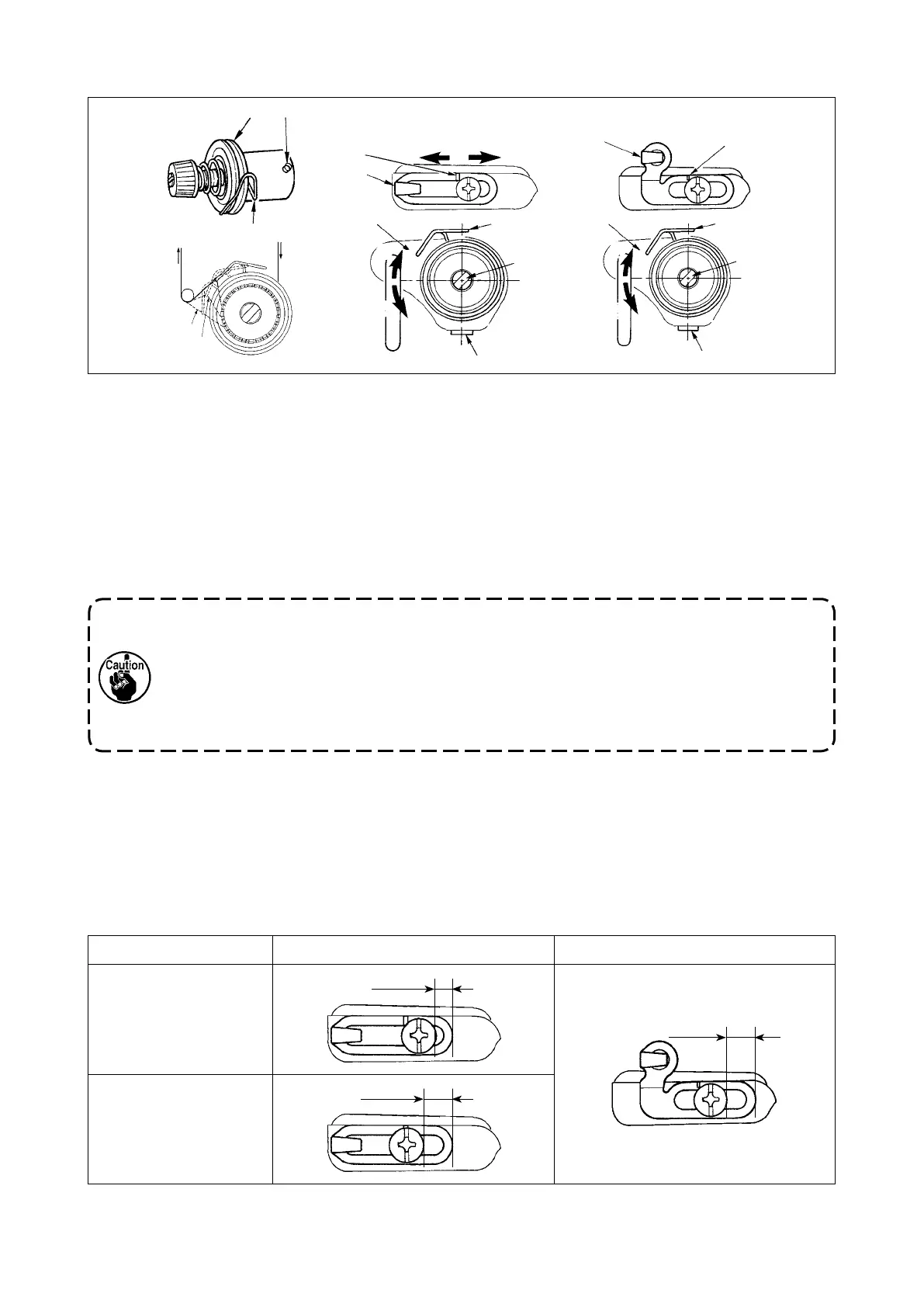❺
❶
❹
G
H
F
E
D
C
A
B
❻
❶
❸
❾
❽
[DDL-8000A-PMS]
❷
[DDL-8000A-PSH]
❻
❶
❸
❷
❾
❽
B
A
[DDL-8000A-PMS] [DDL-8000A-PSH]
< Destination AA and BB >
4mm
7mm
< Destination GG >
7mm
– 21 –
3-12. Adjusting the thread take-up spring and the thread take-up stroke
(1) Adjusting the stroke of thread take-up spring
❶
1) Loosen setscrew
❷
.
2) Turn tension post
❸
clockwise (in direction
A
), the stroke of the thread take-up spring will be increased,
and turn the post
❸
counterclockwise (in direction
B
), the stroke will be decreased.
(2) Adjusting the pressure of thread take-up spring
❶
1) Loosen setscrew
❷
, and remove thread tension (asm.)
❺
.
2) Loosen tension post setscrew
❹
.
3) Turn tension post
❸
clockwise (in direction
A
), the pressure will be increased, and turn the post
❸
coun-
terclockwise (in direction
B
), the pressure will be decreased.
(3) Adjusting the thread take-up stroke
1) When sewing heavy-weight materials, move thread guide
❽
to the left (in direction
C
) to increase the
length of thread pulled out by the thread take-up.
2) When sewing light-weight materials, move thread guide
❽
to the right (in direction
D
) to decrease the
length of thread pulled out by the thread take-up.
* Standard state of the thread guide
The standard distance between the right end face of thread guide and the screw head is as follows:
To check how the thread take-up spring works, draw out the needle thread in direction
F
after
having adjusted the thread take-up spring pressure to check whether the thread take-up spring
exerts force to the thread up to the last moment (state
G
) just before the thread comes out
from
E
. If the spring fails to exert force to the spring until the last moment (state
H
), decrease
the thread take-up spring pressure. In addition, the stroke of the thread take-up spring is exces-
sively small, the spring does not work properly. For the general fabrics, a stroke of 10 to 13 mm
is proper.

